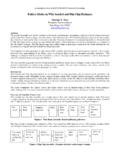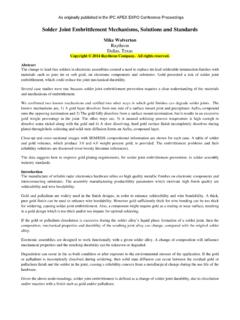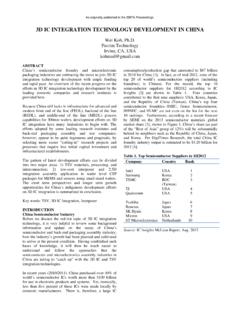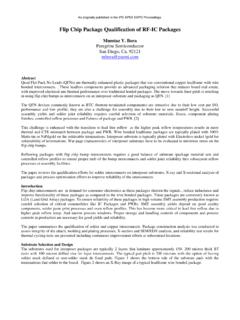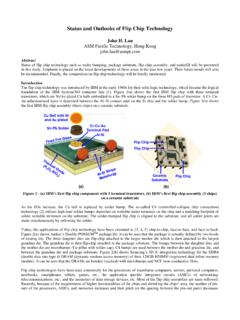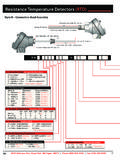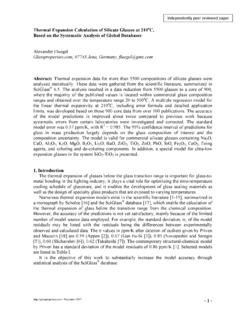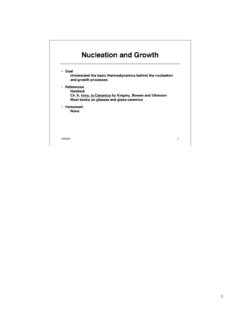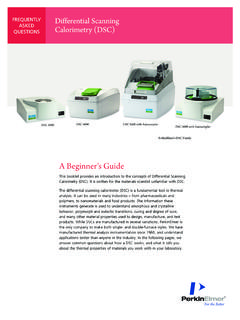Transcription of THE DYNAMICS OF LOW STRESS EPOXY CURING
1 THE DYNAMICS OF LOW STRESS EPOXY CURING Robert L. Hubbard, Lambda Technologies, Inc. Morrisville, NC, USA Iftikhar Ahmad, Lambda Technologies, Inc. Morrisville, NC, USA David R. Tyler, Department of Chemistry and Biochemistry, University of Oregon Eugene, OR, USA ABSTRACT It is now possible to reduce the high stresses built into electronic assemblies by reducing the cure temperatures of EPOXY adhesives and encapsulants. For the first time, an EPOXY thermoset resin can be fully cured at temperatures well below its Tg . Even though the cure temperatures are low and the cure times are not long, the extent of cure is complete; the STRESS advantages of low temperature cure are obtained; and several improvements in thermomechanical properties result.
2 This study compares the use of a uniform variable frequency microwave (VFM) field cure to standard oven CURING at temperatures below Tg . Since commercial flip-chip under-fills have already been shown to be cured with VFM at low temperatures with lowered STRESS and improved reliability, it has now been found that the levels of silica filler can be reduced and elastomeric additives eliminated. Thinned, molded, EPOXY -embedded silicon wafers were also shown to have lower warpage and much lower shrinkage STRESS even when just the post-mold cure was done with VFM at lower temperatures. Key words: low STRESS , EPOXY , under-fill, embedded wafers, microwaves, low temperature INTRODUCTION The use of epoxies in the consumer electronics industry is challenging.
3 With the shift to more brittle low k dielectric materials and larger dice, the stresses produced in chip assembly are intensifying adhesion and reliability issues at die/adhesive/substrate interfaces. With the new trends to thinned dice in large wafers, and panel embedded packaging, there are STRESS induced increased warpage and bow issues in the EPOXY encapsulants. In addition, multiple thermal excursions during assembly pose such difficult challenges that the assembly of electronic devices now accounts for a significant portion of the total cost of consumer electronics [1]. Packaging STRESS can also affect the electrical performance of some of the new device architectures.
4 EPOXY formulations have become quite complex, but their basic thermal behavior remains the same. The ultimate glass transition temperature (Tg ) needs to be high enough so that the EPOXY does not soften during subsequent process steps and allow bonded joints and assembled parts to move with respect to each other. High CURING temperatures are also necessary for full adhesion to all surfaces. It is well established that the thermal cure of thermosets, and in particular, epoxies, requires a cure temperature above the ultimate glass transition temperature (Tg ) to achieve full cure [2-4]. At lower cure temperatures, a vitrified (solid glass) state forms, so the reaction becomes controlled by diffusion of the reactants and is slowed by orders of magnitude (effectively stopped).
5 At gelation, thermoset backbones become rigid, with crosslinking restricted to side-chain reactions. To continue the cure reaction requires increasing the temperature to increase molecular mobility. If vitrification occurs, chemical control of the reaction may be re-established by heating to 10-15 C above Tg . In practice with commercial EPOXY adhesives, the actual cure temperatures are usually set to 50 C higher than Tg to decrease the time of the cure process to two hours or less. But high cure temperatures directly increase STRESS produced between joined materials with widely differing coefficients of thermal expansion (CTE). Another issue is the direct relationship between EPOXY cure temperature and STRESS in the EPOXY network itself.
6 Shrinkage STRESS increases as the EPOXY reaction product cools from the highest cure temperature in the gel state to ambient temperature [5]. As large complex silicon devices are incorporated into common consumer products, thermal STRESS issues become more costly to alleviate. Currently, low CURING temperatures are being sought to allow the use of low temperature plastics, which save cost, weight, and space in consumer products. The use of EPOXY embedded fan-out packaging in large panels for cost reduction faces the same warpage issues on a larger scale. Proceedings of SMTA International, Sep. 25 - 29, 2016, Rosemont, IL, USAPage 305As originally published in the SMTA ProceedingsOne suggestion has been to reduce the cure time with microwave energy.
7 The opportunity offered by microwave CURING of polymers is based on the inherently different heating mechanism involved. In contrast to conventional heating, which creates molecular translational energy, microwave fields excite polarizable electrons in molecules, which creates rotational motion from dielectric loss ( ) [6]. This rotational energy provides increased collision frequency (Z) and more favorable alignment of the reactive species ( ); factors that directly increase reaction rates according to the collision-modified Arrhenius equation 1. k = Z e (- Ea/RT) (1) Microwave excited rotations occur not only on the side chains but also along the backbones of polymers, greatly enhancing the mobility of the entire polymer network.
8 By this means, microwave fields increase the mobility of the infinite network formed at gelation [7] so the cure can continue in the gel state at a lower temperature of the bulk material. Until recently, highly conflicting results have been reported when microwave energy was used to increase the cure rate of EPOXY resins [8-10]. For example, both low reaction rates and very high reaction rates were reported with accompanying speculations of reaction mechanisms and structural dependencies. Furthermore, the common use of a single frequency microwave generator requires that a single mode, in a very small area (less than 1 cm3) be the focus of the experiment.
9 As a result of this difficult experimental condition, it is not surprising that hot spots of activation and cure, represented by broad glass transitions, were found in the product DSC traces. With the development more than two decades ago of variable frequency microwave (VFM) technology [11], it became possible to produce a highly uniform field over a volume of about 1 m3 (a million-fold increase) from a single generator and waveguide. Consequently, sample temperature variations of only C have been measured across large cavity chambers from nearly wall to wall in all dimensions. The VFM microwave oven changes frequencies every 25 s.
10 This technology eliminates the possibility of metal arcing found in single frequency systems. With these uniform VFM fields, it has been reported that polymerization of EPOXY thermosets [12], thermoplastic films [13] and other polymer systems [14] have been cured at temperatures well below the standard thermal cure, with high extent of cure. In addition, there is evidence of modified thermomechanical properties of these polymers; including lowered modulus with decreased crosslink density [15], and reduced coefficient of thermal expansion [16]. Finally, it is noted that a low temperature VFM EPOXY cure resulting in a high Tg has been reported to produce lowered STRESS and increased reliability of an IBM microprocessor server module [17].


